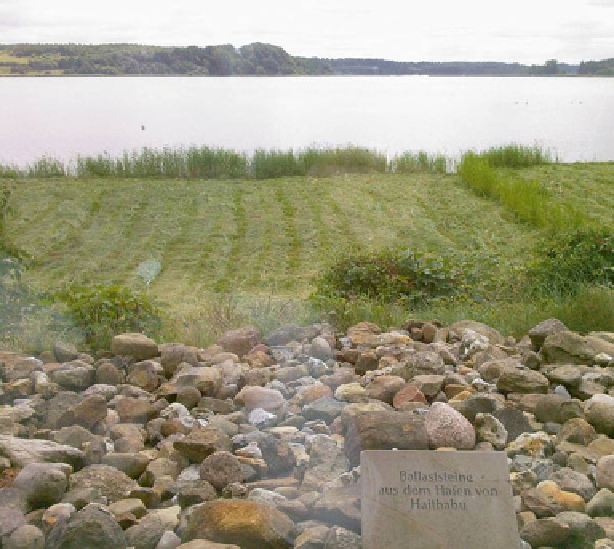Environmental Engineering Reference
In-Depth Information
Fig. 4
Ballast stones excavated near the vessel landing pier of the Viking trade hub Haithabu,
Germany
Very likely, on account of the great importance of each vessel when not in use they
were likely to have been carried on muddy shore, a habitat the soft clam also occu-
pies, and so before any journey a supply of food may have been readily available.
However, Wolff (
2005
) stated that the transfer of
Mya
to Europe by the Vikings
poses a problem. Except for an occasional event when a vessel may have been
driven off course by gales, there was no direct Viking shipping activity between
North America and Europe (Marcus
1980
). Greenlanders sailed to North America
more frequently and also travelled between Greenland and Norway. However these
voyages were not undertaken by the same vessels. It may therefore be possible that
Mya
was fi rst introduced from North America to Greenland and subsequently
from Greenland to Europe (Ockelmann
1958
; Petersen
1978
,
1999
). In contrast, a
different scenario describes that there was a gradual re-expansion of this mussel
into Europe following the last glaciation period from a southern locality. So in this
case it remains uncertain whether this mussel was introduced or it naturally re-
colonised Europe.

Search WWH ::

Custom Search